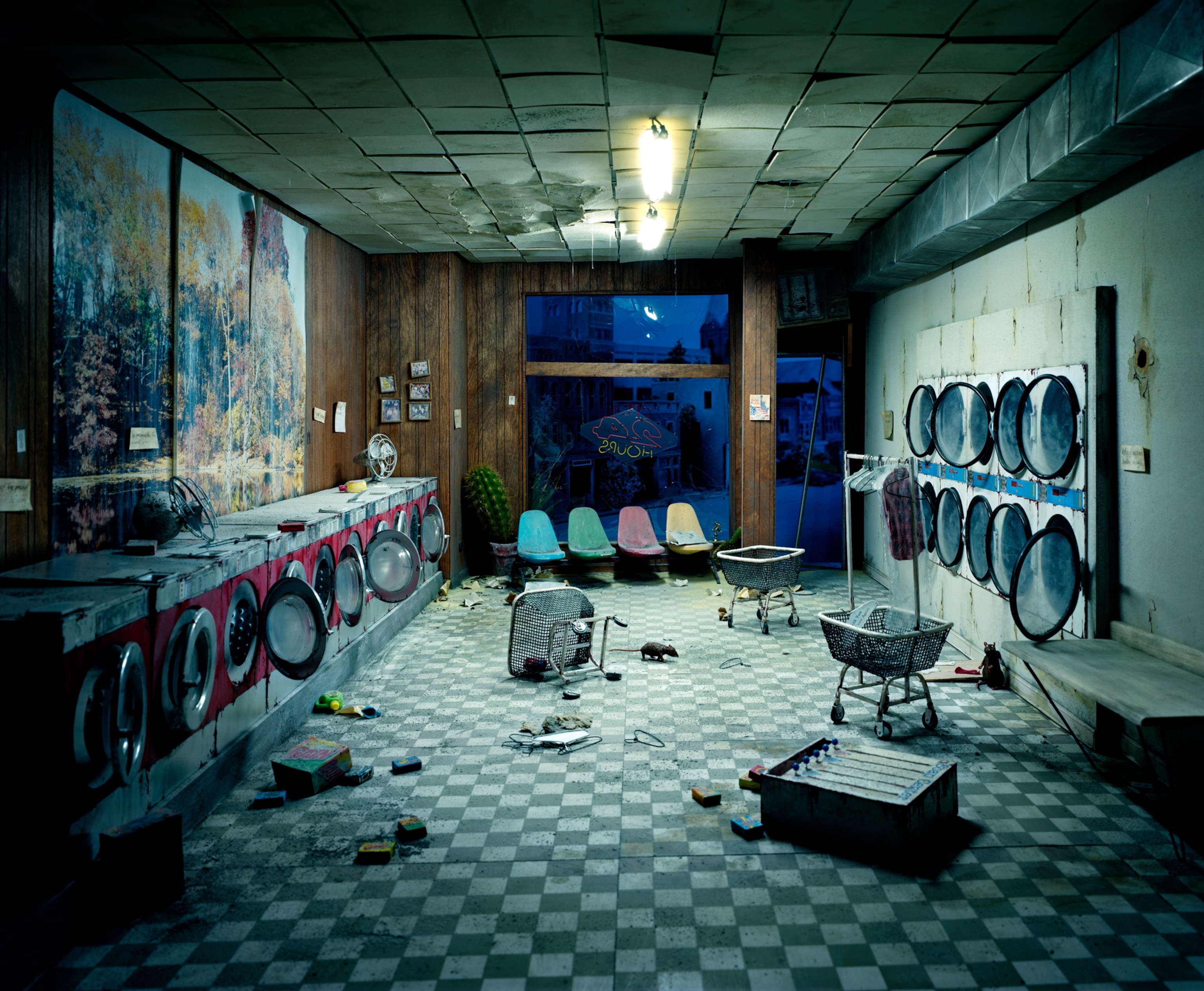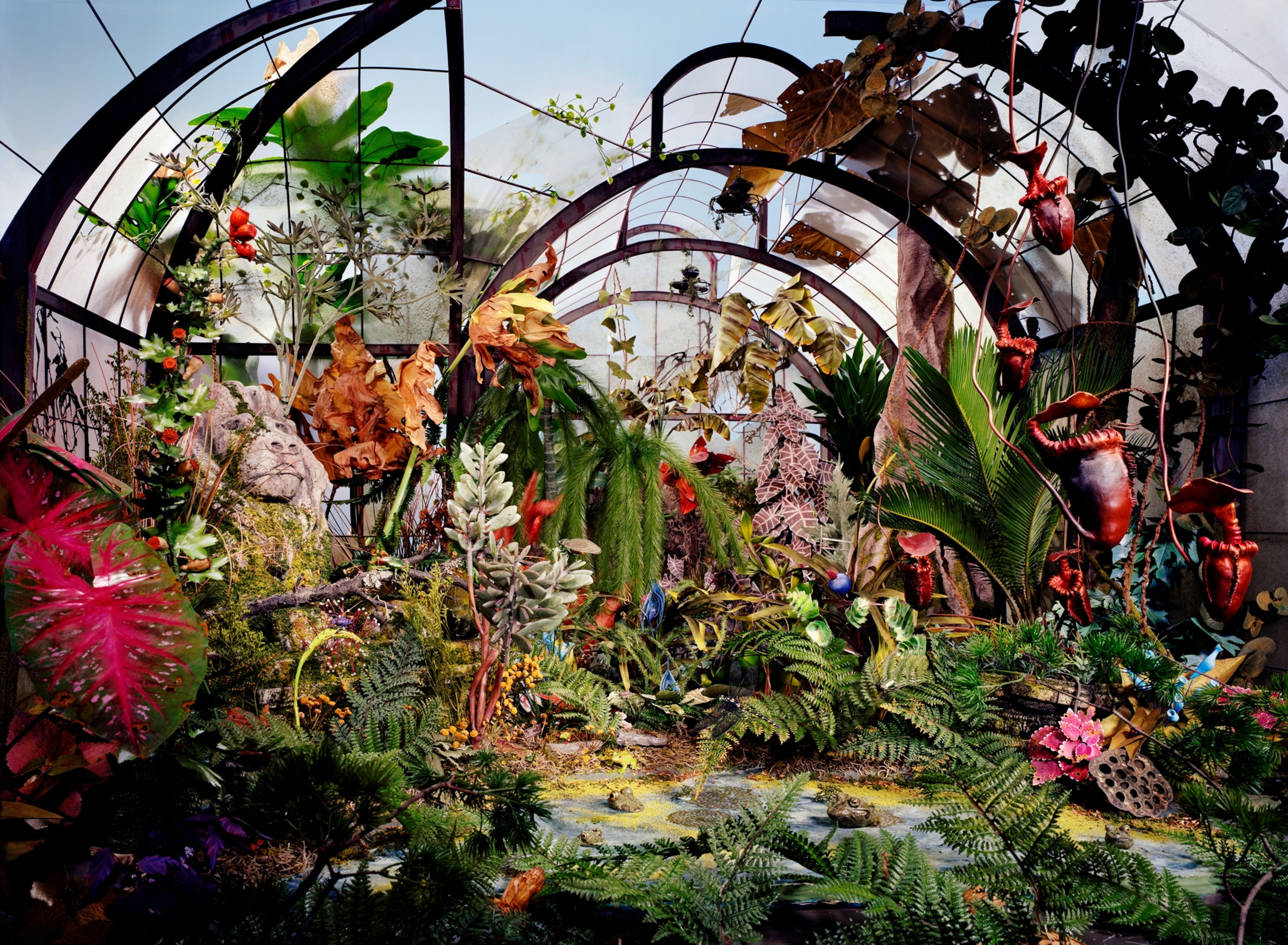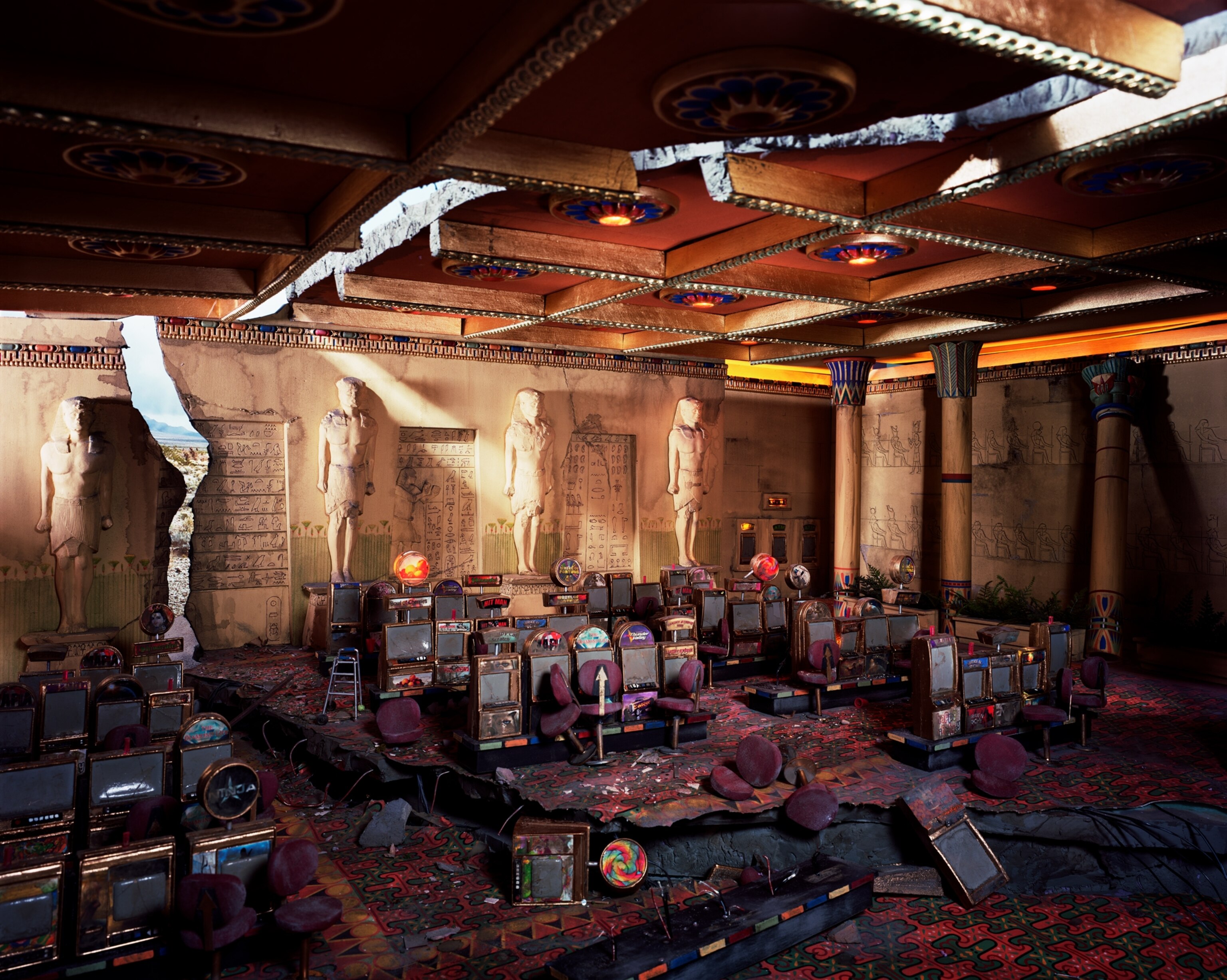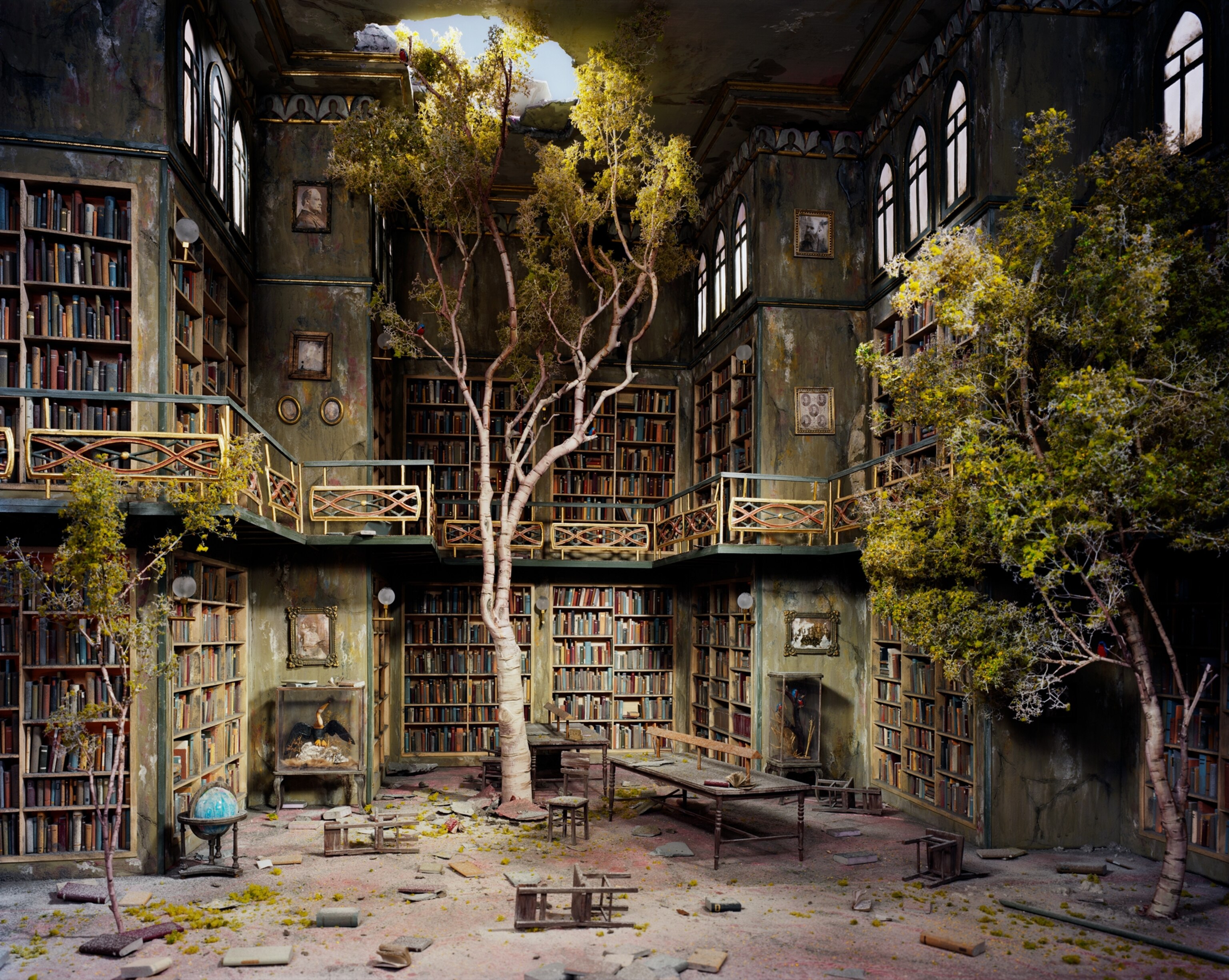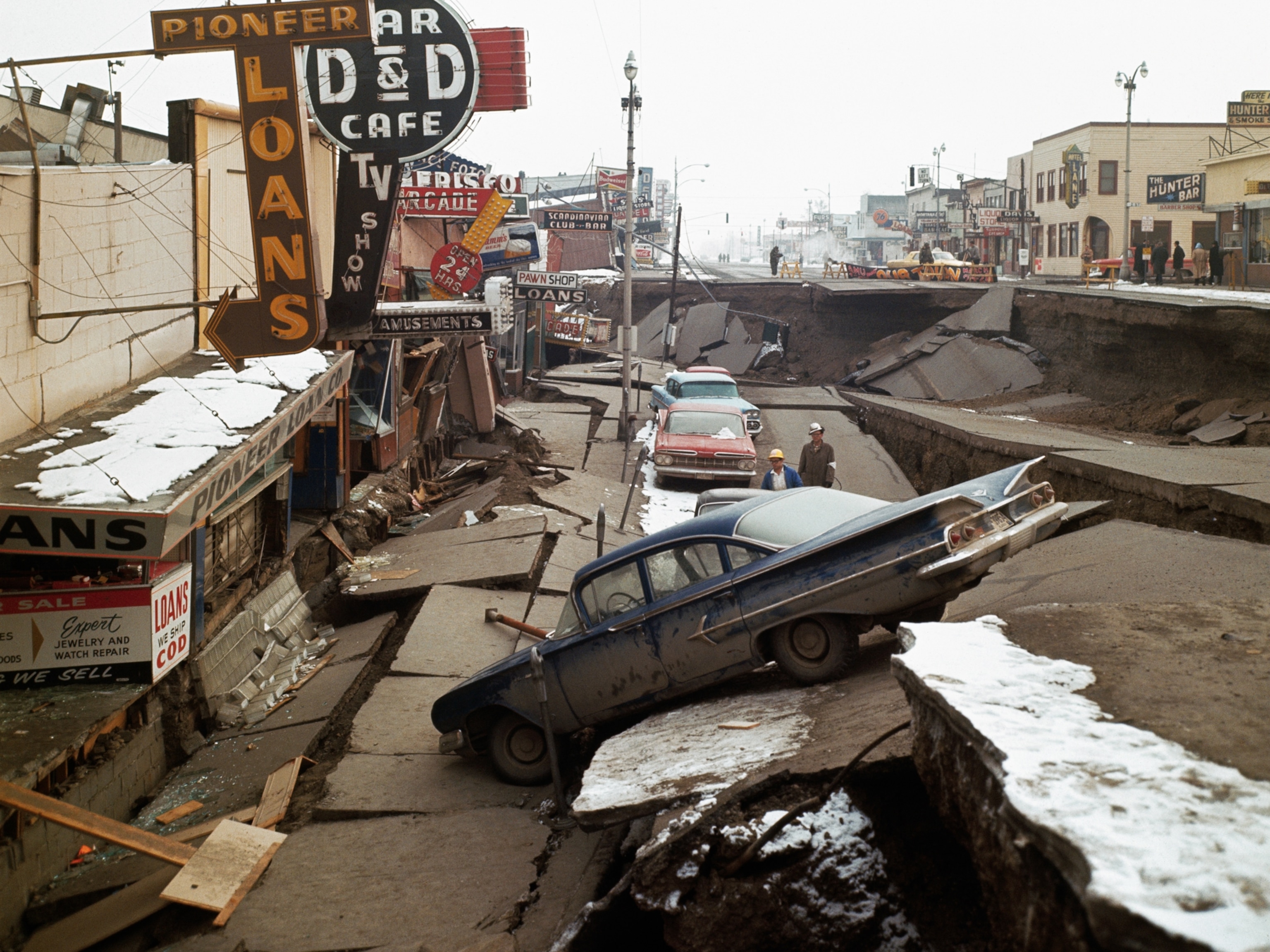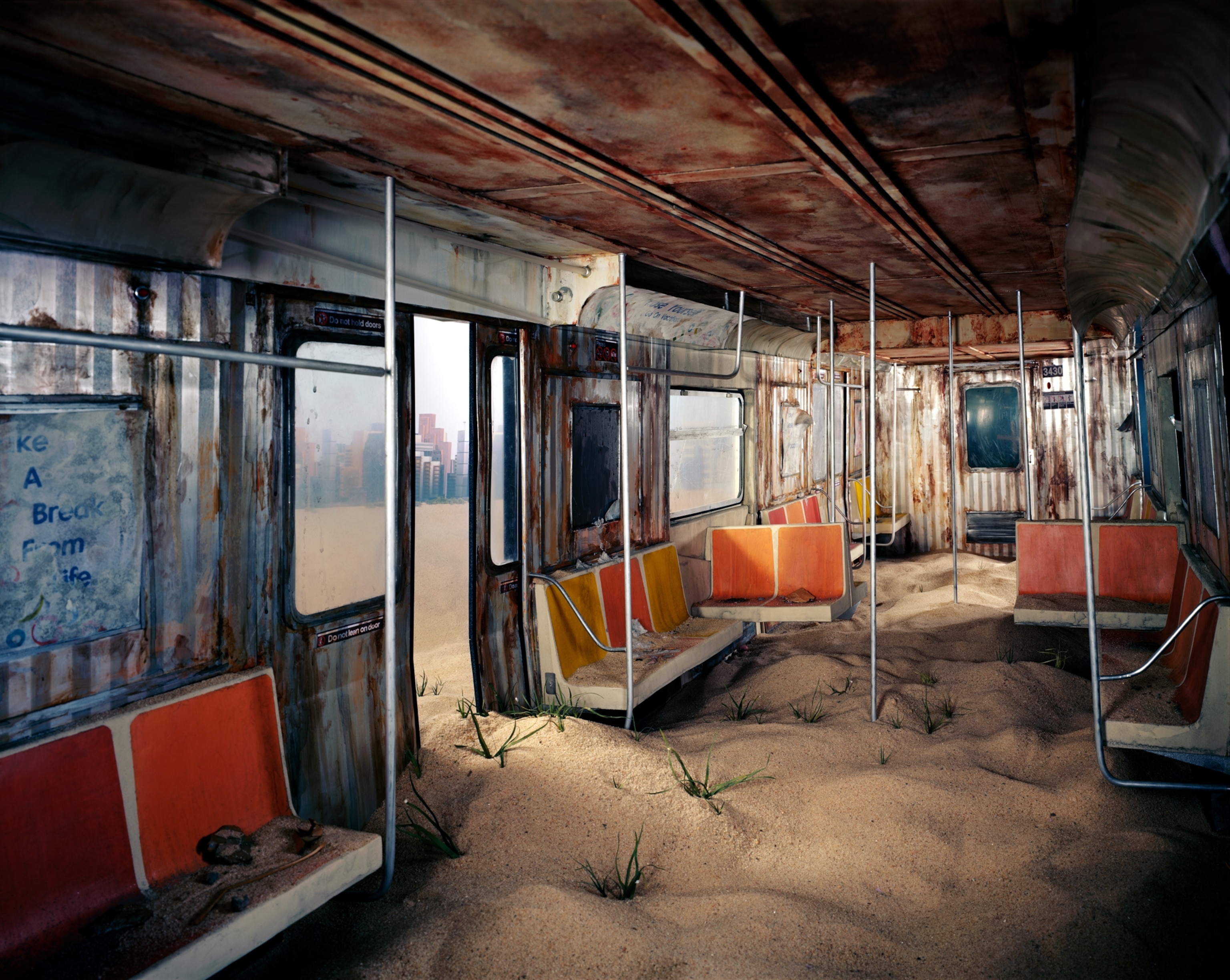
It’s like the apocalypse, but smaller
Artists’ tiny models imagine what a city might look like after humans are long gone.
The city is a ruin. Trains sit motionless on their tracks. Schools are silent. Libraries and laundromats languish in decay. Everyone has vanished.
It’s the end of the world as we know it, but Lori Nix feels fine. In fact, she and Kathleen Gerber, her partner in art and life, are the cheerful architects of this apocalypse. On a gray winter day in Brooklyn, the two women are working in their chockablock apartment cum studio, carefully building small-scale dioramas of disaster.
Their goal, says Nix, is to create and photograph “open-ended narratives—models of a post-human metropolis in the future, after an unknown catastrophe.” To “unlock, engage, and provoke” viewers’ imaginations, “we want [them] to contemplate the present. Do we still have a future? Will we be able to save ourselves?”
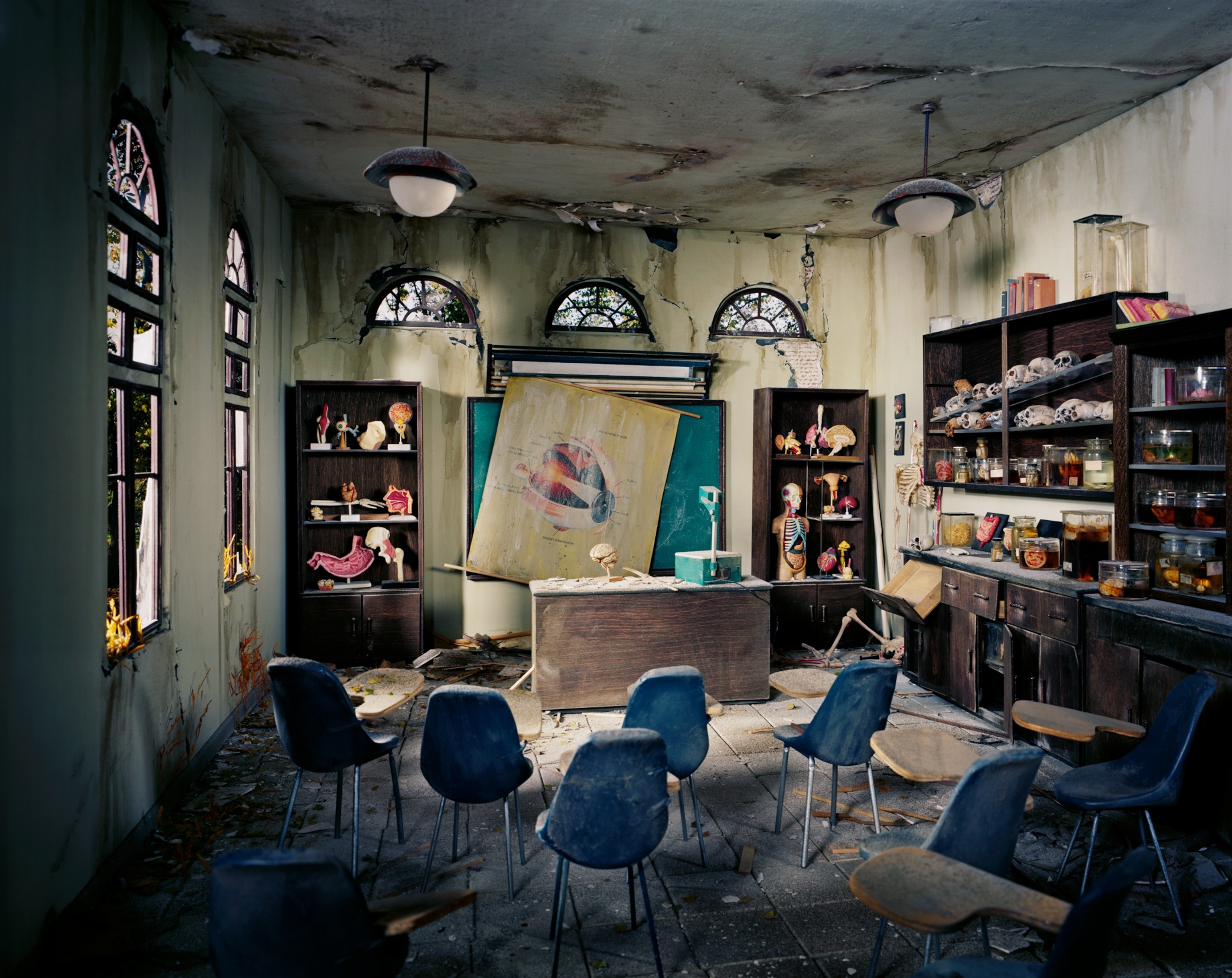
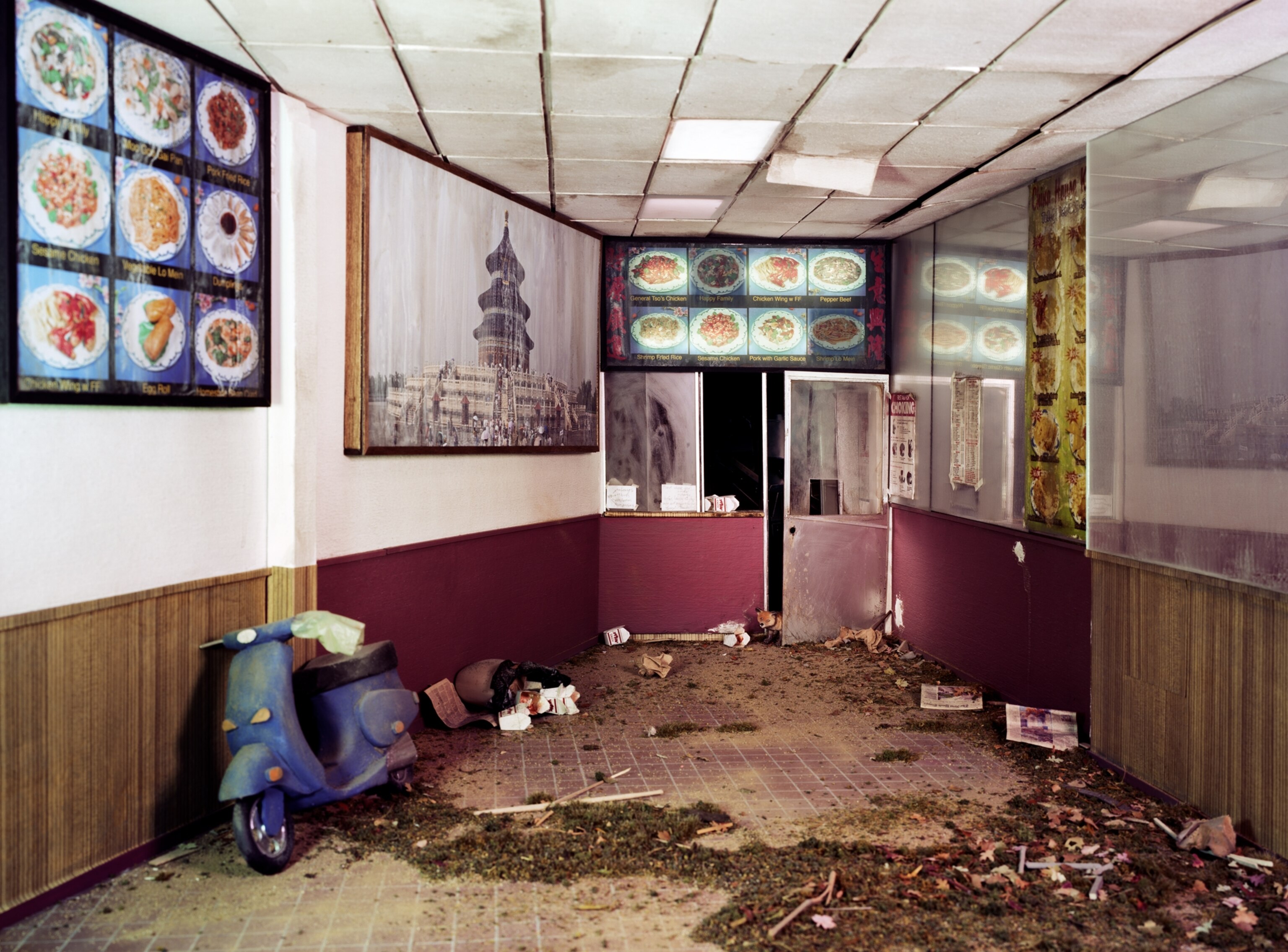
Nix gets most of her ideas for these intricate tableaux from riding on the subway or paging through travel photos. Other inspirations spring from her past. Growing up in Tornado Alley in the 1970s, she was affected by extreme weather—and by disaster films like The Towering Inferno and dystopian fare like Planet of the Apes.
Today she considers herself a “faux landscape photographer.” But “rather than traipse through the countryside looking for the perfect landscape, I just make it right here, on my tabletop.”
That’s where Gerber comes in. Her background in gilding, glassblowing, and faux finishing helps her build, distress, and age the sets.
“She’s the sculptor,” says Nix. “I’m the architect. I come up with the ideas and the color palettes and the camera angle. She does all the detail work—makes things come alive and shine.”
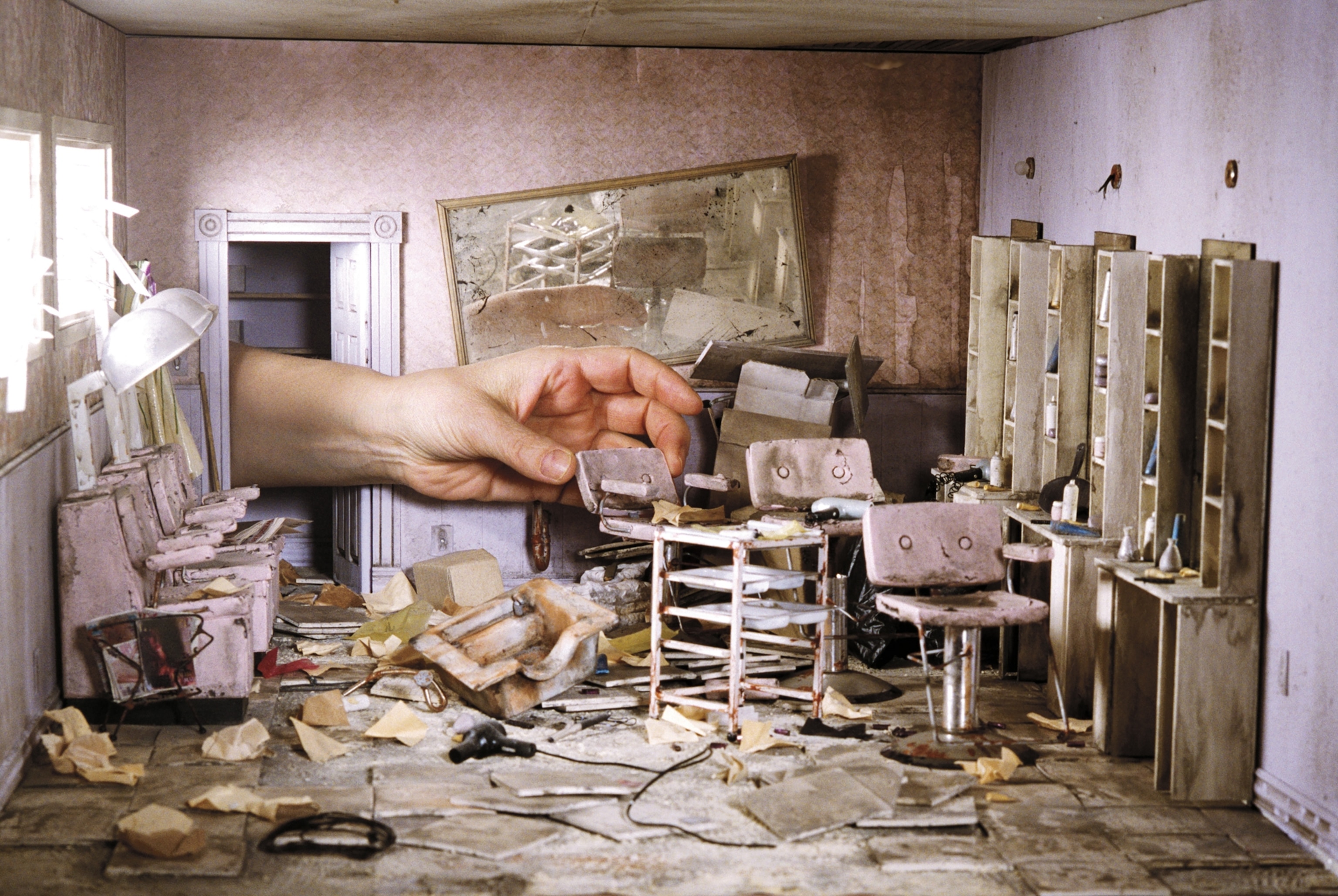
Their Lilliputian sets range from 20 inches to nine feet in diameter. They’re manufactured using common materials—paper and acrylic, cardboard and clay, extruded foam and plastic sheeting—and tiny power tools. It’s a painstaking process: Each scene takes seven to 15 months to build. When one is finally ready, Nix photographs it with an 8 x 10 large-format camera. A single final shot can take up to three weeks to produce.
“You wouldn’t know it from the work we do,” says Nix, “but I’m actually really optimistic. And I think our scenes—where nature is reclaiming the landscape—are weirdly hopeful.” Gerber agrees. “We’re always shooting for a mix of humor and horror,” she says. “We’re always trying to engage people—and get them to think.”
